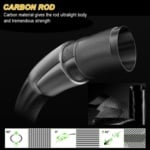When it comes to anchoring, there’s more to it than just throwing a heavy object into the water and hoping for the best. Different situations call for different types of anchors, each with their own unique design and purpose. Whether you’re a seasoned sailor or a casual boater, understanding the various types of anchors and their uses is essential for safely securing your vessel. From the traditional fluke anchor to the innovative mushroom anchor, this article will give you a comprehensive overview of the different anchors you can rely on to keep your boat in place.
Weighted Anchors
Weighted anchors are a type of anchoring system commonly used in boating and marine settings. These anchors are designed to provide stability and hold in place even in rough waters or strong currents. There are several types of weighted anchors, each with its own unique design and purpose.
Grappling Anchors
Grappling anchors, also known as claw anchors, are one of the most common types of weighted anchors. These anchors have multiple flukes or arms that dig into the seabed or riverbed, providing a secure hold. Grappling anchors are especially effective in rocky or gravelly bottoms.
Mushroom Anchors
Mushroom anchors, as the name suggests, have a shape similar to a mushroom. These anchors are popular for use in sandy or muddy bottoms. The wide cap of the anchor prevents it from sinking too deep into the sediment, providing a reliable hold. Mushroom anchors are commonly used in small boats or for anchoring in shallow waters.
Plow Anchors
Plow anchors, also known as CQR anchors, have a plow-like shape with a concave fluke at the bottom. These anchors are known for their excellent holding power in a variety of seabed conditions, from sand to rocks. Plow anchors are widely used in larger vessels due to their ability to maintain a secure hold even in adverse weather conditions.
Danforth Anchors
Danforth anchors, or fluke anchors, are lightweight and easy to handle. They have two large flukes that penetrate into the seabed, providing a strong grip. Danforth anchors are popular for smaller boats and are effective in sandy or muddy bottoms. Their lightweight design makes them convenient for boaters who need to regularly anchor and disengage.
Pivoting Anchors
Pivoting anchors are another category of anchors that are designed to rotate and pivot to achieve a secure hold. These anchors offer versatility and effectiveness in various marine environments.
Fluke Anchors
Fluke anchors, similar to the Danforth anchors, have two large, flat flukes that pivot to maintain a secure hold. The design allows for easy retrieval and storage. Fluke anchors are primarily used for small to medium-sized boats and are effective in sandy or muddy bottoms.
Plow Anchors
Plow anchors, as mentioned earlier, are not only weighted anchors but also fall under the category of pivoting anchors. The concave shape allows the anchor to pivot and align with the direction of the force, providing a strong hold in a variety of seabed conditions.
Bruce Anchors
Bruce anchors, also known as claw anchors, have a unique design that combines the features of both grapnel and plow anchors. The claw-like shape and pivoting ability make Bruce anchors effective in a wide range of seabed conditions, including sand, rock, and mud. These anchors are commonly used in larger vessels and offer excellent holding power.
Expansion Anchors
Expansion anchors are a type of anchor used mainly in construction and engineering projects. These anchors are designed to expand and provide secure attachment to various structural materials.
Wedge Anchors
Wedge anchors are widely used for securing structural components to concrete or masonry. These anchors consist of a threaded rod, an expansion clip, and a nut. When the anchor is tightened, the expansion clip expands and wedges itself into the concrete, creating a secure connection.
Sleeve Anchors
Sleeve anchors are similar to wedge anchors, but instead of a wedge-shaped expansion clip, they have a cylindrical sleeve. The sleeve expands when the anchor is tightened, gripping the concrete or masonry and providing a reliable attachment point for structural elements.
Drop-in Anchors
Drop-in anchors are used for heavy-duty applications. These anchors are installed by drilling a hole into the concrete or masonry and then inserting the anchor. When a bolt is threaded into the anchor, it expands and secures the material. Drop-in anchors are commonly used in applications that require frequent disassembly and reassembly.
Toggle Bolts
Toggle bolts, also known as butterfly anchors, are unique as they are designed to be used in hollow materials such as drywall or hollow doors. These anchors consist of a combination of a bolt and a spring-loaded wing that folds back when inserted into the hollow material and then springs open behind the material, providing a secure hold.
Screw Anchors
Screw anchors, as the name implies, are anchors that are secured into various materials using screws. These anchors offer ease of installation and versatility in a range of applications.
Self-Drilling Anchors
Self-drilling anchors, also known as self-drilling screws or concrete screws, have a specialized design that allows them to drill their own pilot holes as they are driven into the material. These anchors are commonly used in applications such as attaching fixtures to concrete or securing framing to masonry.
Self-Tapping Anchors
Self-tapping anchors work similarly to self-drilling anchors but are designed for use in softer materials such as wood or plastic. These anchors have sharp threads that cut into the material as they are screwed in, creating their own threads and providing a secure hold.
Concrete Screws
Concrete screws are specifically designed for fastening materials to concrete or masonry. These screws have a hardened tip and deep threads that allow them to penetrate and securely anchor into the material. Concrete screws are commonly used in construction or renovation projects where a strong attachment to concrete is required.
Toggle Anchors
Toggle anchors are a type of anchor that utilizes a toggle mechanism to provide secure attachment in various materials.
Toggle Bolts
Toggle bolts, mentioned earlier under expansion anchors, are also a type of toggle anchor. These anchors consist of a threaded bolt and a spring-loaded wing. When the bolt is threaded into the anchor, the wing folds back, allowing for easy insertion into the material. Upon tightening, the wing springs open, creating a secure hold.
Toggle Wings
Toggle wings, also known as toggle fasteners, are another type of toggle anchor. These anchors consist of a metal or plastic wing that is attached to a bolt or screw. When the anchor is inserted into the material, the wings open and provide a wide surface area for secure attachment.
Hollow Wall Anchors
Hollow wall anchors, as the name suggests, are used in hollow materials such as drywall or plasterboard. These anchors consist of a screw that is inserted into the material, and as it is tightened, the anchor expands and creates a secure hold within the hollow space.
Expansion Shields
Expansion shields are anchoring devices that are used in conjunction with screws or bolts to provide additional stability and support in various materials.
Plastic Expansion Anchors
Plastic expansion anchors, also known as wall plugs, are lightweight and easy to install. These anchors are commonly used in softer materials such as drywall or plasterboard. The anchor expands when a screw is inserted, creating a secure attachment point.
Lead Anchor Shields
Lead anchor shields, often used in conjunction with screws, are used in harder materials such as concrete or masonry. These anchors are highly durable and provide excellent holding power. The expansion of the shield when the screw is inserted ensures a secure attachment.
Shield Anchors
Shield anchors, also known as sleeve anchors, are commonly used in medium to heavy-duty applications. These anchors consist of a metal sleeve and a cone-shaped expansion piece. When the anchor is set into the material and tightened, the expansion piece expands, providing a secure hold. Shield anchors are commonly used in concrete and masonry applications.
Wedge Anchors
Wedge anchors, mentioned earlier under expansion anchors, are also categorized under wedge anchors due to their design and functionality.
Fully Threaded Wedge Anchors
Fully threaded wedge anchors are designed to provide maximum expansion and secure attachment in concrete or masonry. The entire length of the anchor is threaded, allowing for a strong hold throughout its length. These anchors are commonly used in heavy-duty applications where high levels of tension or shear force are present.
Partial Threaded Wedge Anchors
Partial threaded wedge anchors, unlike fully threaded anchors, have a portion of the anchor shaft that is unthreaded. This design provides flexibility and allows for a combination of easy installation and strong anchoring. Partial threaded wedge anchors are commonly used in a range of construction and industrial applications.
Stainless Steel Wedge Anchors
Stainless steel wedge anchors offer excellent corrosion resistance, making them ideal for outdoor or marine applications. These anchors are designed to provide a secure hold in concrete or masonry while withstanding exposure to harsh environmental conditions.
Galvanized Wedge Anchors
Galvanized wedge anchors are coated with a layer of zinc, providing protection against corrosion. These anchors are commonly used in outdoor or coastal applications where exposure to moisture and saltwater is a concern. The galvanized coating ensures the longevity and durability of the anchor.
Masonry Anchors
Masonry anchors are specifically designed for use in various masonry materials, such as concrete, brick, or stone. These anchors provide a secure attachment point for objects and fixtures.
Sleeve Anchors
Sleeve anchors, mentioned earlier under expansion anchors, are widely used in masonry applications. Their design allows for excellent expansion and gripping power, making them suitable for a range of materials, including concrete and brick.
Wedge Anchors
Wedge anchors, also mentioned previously, are highly versatile anchors that can be used in masonry applications as well. Their ability to expand and create a secure hold in concrete or masonry makes them a popular choice for structural and construction projects.
Concrete Screw Anchors
Concrete screw anchors, mentioned under screw anchors, are also suitable for masonry applications. These anchors provide a secure attachment point in various masonry materials, offering ease of installation and versatility in different construction or renovation projects.
Drop-in Anchors
Drop-in anchors, previously mentioned, are useful in masonry applications where frequent disassembly and reassembly are required. These anchors provide a reliable hold in concrete or masonry and allow for easy removal and repositioning when needed.
Hammer Drive Anchors
Hammer drive anchors, also known as nail drive anchors, are designed for rapid installation in masonry materials. These anchors are driven into the material using a hammer, allowing for quick and easy attachment of fixtures or objects.
Drywall Anchors
Drywall anchors are specifically designed for use in drywall or gypsum board. These anchors provide a strong attachment point for objects without damaging the delicate material.
Plastic Sleeve Anchors
Plastic sleeve anchors, mentioned earlier, are commonly used in drywall applications. These lightweight anchors are easy to install and provide a secure hold in the relatively soft material.
Toggle Bolts
Toggle bolts, previously mentioned, are also used in drywall applications. These anchors offer a reliable attachment point in hollow spaces within the drywall, allowing for the secure mounting of heavier objects or fixtures.
Molly Bolts
Molly bolts, also known as hollow wall anchors, are designed specifically for use in hollow materials such as drywall. These anchors consist of a screw that expands when tightened, creating a secure hold within the hollow space.
Chemical Anchors
Chemical anchors, as the name suggests, rely on the use of various chemical compounds to create a secure attachment point in different materials. These anchors offer versatility and strength in a wide range of applications.
Epoxies
Epoxies are commonly used as a chemical anchor for heavy-duty applications. These two-part compounds are mixed together and injected into the anchor hole, where they bond with the surrounding material, creating a strong and durable attachment point.
Polyesters
Polyester resin compounds are also used as chemical anchors. These compounds are ideal for medium to heavy-duty applications and provide excellent load-bearing capacity. The polyester resin bonds with the material, ensuring a reliable attachment.
Vinylesters
Vinylester resin anchors offer excellent chemical resistance and are commonly used in applications where exposure to corrosive environments is expected. These anchors provide a strong attachment point and are suitable for a range of materials, including concrete and masonry.
Acrylics
Acrylic resin anchors are commonly used in light to medium-duty applications. These anchors provide a reliable hold in various materials and are particularly effective in porous substrates. Acrylic resin compounds offer quick curing times, allowing for efficient installation.
In conclusion, understanding the different types of anchors and their uses is essential for selecting the right anchor for your specific application. From weighted anchors designed for marine settings to expansion anchors used in construction projects, each type of anchor offers unique features and benefits. Whether you need a secure attachment point in concrete, masonry, drywall, or even hollow materials, there is an anchor available to suit your needs. By considering the specific conditions, load requirements, and material properties, you can choose the appropriate anchor to ensure a reliable and strong connection.





